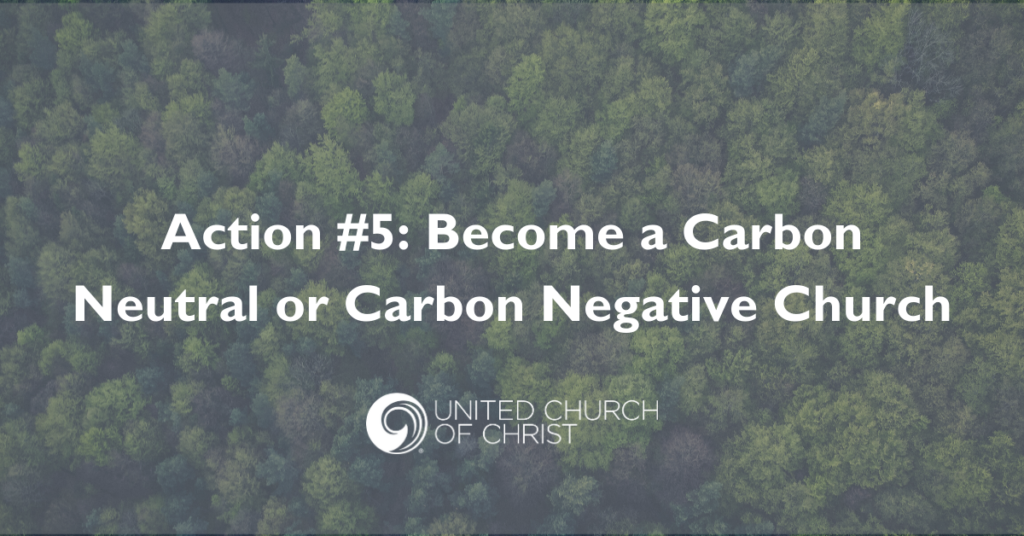Become Carbon Neutral or Carbon Negative Church
5) Become a carbon neutral or a carbon negative/climate positive church.
- For a church, to be carbon neutral typically refers to having no net climate pollution from building operations. To be climate positive or carbon negative, entails activity that goes beyond achieving net zero carbon emissions to creating an environmental benefit by removing additional carbon dioxide from the atmosphere. A church, for example, can generate more clean energy than it uses. Suggested resources:
- In 2017, the Christian Church (Disciples of Christ) passed a resolution that called on its churches to be carbon neutral by 2030 and carbon positive by 2035. Find ideas and inspiration in the resources produced by the Christian Church (Disciples of Christ) and their ecumenical partner Blessed Tomorrow.
- In 2013, the UCC passed a resolution to call upon churches to become carbon neutral by 2030. Check out the list of resources generated on ucc.org.
- Explore and assess possibilities like solar panels, the purchase of renewable energy off the grid, and carbon offsets. Make use of great online resources like the Solar Power 101 for Faith Communities Webinar.
- When addressing a church’s energy use, always make a point of learning about the source of your current energy and whether or not anyone is harmed in the generation of it. Toxic pollutants from coal plants, for example, are connected to a wide range of serious health matters ranging from cardiovascular disease to the damage of developing brains in utero and after birth. These coal plants are disproportionately located near low income neighborhoods and communities of color.
Categories:
10 Ways to Mobilize
Related News
Tell Your Story!
10) Throughout the process of mobilizing, tell your story! Make what you do visible at your...
Read MoreBecome a Kairos Mobilization Hub
9) Become a kairos mobilization hub. Create ways to inspire church members to connect what they do...
Read MoreCall on Officials for Green New Deal
8) Through town halls, delegations, candidate forums, emails, and petitions, call upon elected...
Read More


